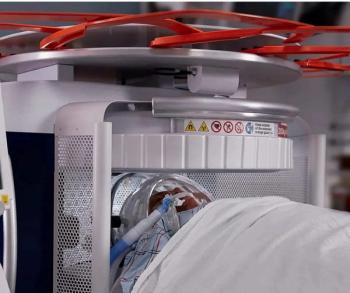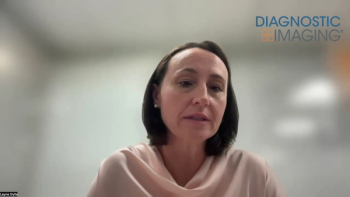
Risks outweigh benefits for low back pain imaging
Low back pain is so common a complaint that physicians increasingly are recommending against invasive therapy for any but the most serious cases. This approach has led researchers to back up a step in patient management and crunch the numbers behind the imaging procedures that are done to assess and monitor this condition. It’s not good news for radiology.
Low back pain is so common a complaint that physicians increasingly are recommending against invasive therapy for any but the most serious cases. This approach has led researchers to back up a step in patient management and crunch the numbers behind the imaging procedures that are done to assess and monitor this condition. It's not good news for radiology.
Based on meta-analyses of research involving more than 1800 patients, the investigators concluded that resources could be better spent and patients would be better off if MR, CT, and radiography were not performed routinely on patients with low back pain.
Researchers from the Oregon Health and Science University have concluded that scans of this part of the body should be performed only if physicians observe features of a serious condition underlying low back pain. The research, reported from the OHSU Oregon Evidence-Based Practice Center and published in mid-February in The Lancet, documents that these scans do not lead to lessened pain, improved function, or even reduced anxiety for the patient.
"There were even some trends toward worse outcomes," said lead author Dr. Roger Chou, scientific director of the Oregon center.
The impact of the warning may be felt most among MR practitioners, he said.
"Rates of utilization of lumbar MRI are increasing, and implementation of diagnostic imaging guidelines for low back pain remains a challenge," Chou said. "However, clinicians are more likely to adhere to guideline recommendations about lumbar imaging now that these are supported by consistent evidence from higher quality randomized controlled trials."
In what may be part of a growing trend as the federal government focuses on reining in healthcare costs, Chou and colleagues noted that imaging studies for low back pain increase medical costs, especially when they lead to unnecessary invasive procedures. Such procedures can further affect patient well-being if they move patients to reduce their activity, as exercise can improve back health.
Chou and colleagues conducted a meta-analysis of randomized controlled trials that compared immediate back imaging done with x-ray, MR, or CT against "usual clinical care" that did not involve immediate imaging. Data from six clinical trials were examined. A range of outcomes was addressed. These included indices of pain and function, quality of life, mental health, overall patient-reported improvement, and patient satisfaction.
The analysis found no significant differences between immediate imaging and usual clinical care.
For more information from the Diagnostic Imaging and Searchmedica archives:
Newsletter
Stay at the forefront of radiology with the Diagnostic Imaging newsletter, delivering the latest news, clinical insights, and imaging advancements for today’s radiologists.




























